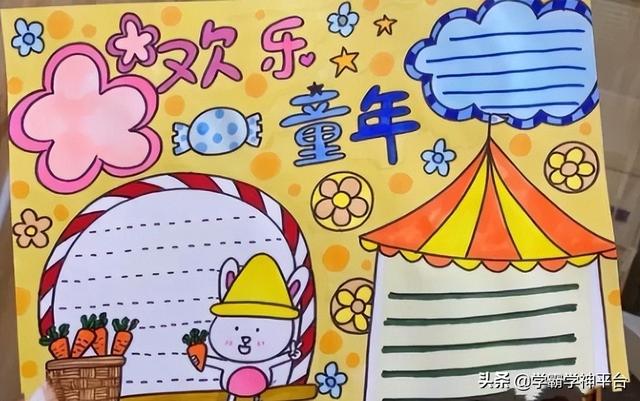日语语法和用法的日语文章(你所不知道的日语)
“Yes,” “No,” “I see,” “Got it,” “Here,” “Still here,” “Here you are,” “OK,” “What?” Hard to believe one single word can have so many different meanings. Particularly if it’s one that looks as innocent and undemanding as “hai.”很难相信一个词能有这么多的含义,尤其是当“嗨”这个日语发音看上去是如此简单单纯的时候。
This false first impression may result from hai’s famous but dull part in the old response pairing of はい (hai, yes) and いいえ (iie, no). But just as communication involves a lot more than just answering yes/no questions, that’s only a tiny bit of what はい can really do.首先因为haiはい这个词老是会和いいえ搭配使用因为容易给人造成错误的第一印象。但当交流的时候如果不仅仅只是表示回答yes或no的含义时-这只是它一小部分的使用场景之一。
Likely its most important function lies in the domain of backchanneling, 相づち (aizuchi) in Japanese. Together with its more casual peers うん (un), えー (ē) and a couple of others, it occurs in high frequency in everyday conversations. “Go on, I’m (still) listening” is what it says to the current speaker, if not in so many words.它更重要的功能很可能在于其“反向通道”的作用,日语中叫相づち (aizuchi)。它常常会和うん (un), えー (ē)以及其他的词在每天的日常交流中高频率地出现。表示当前说话人想要言简意赅地告诉对方“请继续,我听着呢。”
Just how important this is can easily be understood when withholding your はい’s for a second during a conversation. You’ll be able to observe how it can make your conversational partner increasingly ill at ease. While such acts of backchanneling are similarly important in English (and other languages, last time I checked), some studies have shown that the frequency of はい and the like is in fact considerably higher in Japanese than in English conversations.如果在谈话中你很谨慎地说出はい这个词,那就会很让人理解其重要性。你将会观察到这也会让你的谈话对象变得有压力起来。这种“返向通道”的功能在英语以及其他语言中也很重要,有研究表明在日语中はい和类似这样的词的使用频率要比在英语中高得多。
Another reason for はい’s high popularity is that it’s in charge of a lot of things that in English are done by “all right” or “OK.” Functionally, that means はい is commonly used to mark the completion of a previous action or the imminent beginning of one up next. Examples are: はい、ありがとう (hai, arigatō, OK, thanks), はい、どうぞ (hai, dōzo, all right, here you are) and はい、行きましょう (hai, ikimashō, OK, let’s go).はい人气高的另一个原因是它负责了很多英语中由“好吧”或“OK”完成的事情。从功能上讲,这意味着はい通常用于标记上一个动作的完成或下一个动作的即将开始。例子是:はい、ありがとう(hai,arigatō,好的,谢谢),はい、どうぞ(hai,dōzo,好吧,你来了)和はい、行きましょう(hai,ikimashō,好的,走吧)。
It’s in this function that はい also regularly hits the TV news. Whenever there is an interview setting, the first thing an interviewee will likely say in reply to the newscaster’s question is “はい,” here most compactly paraphrased as something like “I understood the question and now I’m going to answer it.” Well, go ahead then.正是在这个功能中,はい 也经常出现在电视新闻中。每当有采访场景时,被采访者在回答新闻播音员的问题时可能会说的第一句话是“はい”,这里最简洁的解释是“我理解了这个问题,现在我要回答它”。好吧,那就去吧。
This OK-ishness of はい also makes it a common, if somewhat flat, response item to an expression of gratitude. Yes, when someone says ありがとう (arigatō, thanks), this may indeed be acknowledged by a simple はい. Provided it’s a sufficiently informal speech situation, that is, otherwise responses like どういたしまして (dō itashimashite, you’re welcome) or はい’s old opponent いいえ (iie, not at all) are certainly more suitable.はい 的这种 OK的含义也使它成为表达感激之情的常见回答选项,虽然有点平淡。是的,当有人说ありがとう(arigatō,谢谢)时,这可能确实可以通过简单的はい来承认。如果这是一个足够非正式的演讲情况,也就是说,像どういたしまして(dō itashimashite,不客气)或はい的老对手いいえ(即,一点也不)这样的回答肯定更合适。
And now for something completely different. As thousands of Japanese schoolchildren will happily confirm on a daily basis, はい is also the standard reply item in a roll call. Ideally delivered in a loud and energetic voice, that’s where はい comes to mean “here.”而现在完全不同的东西。正如成千上万的日本学童每天都会愉快地确认,はい也是点名中的标准回复项目。理想情况下以响亮而充满活力的声音传达,这就是はい的意思是“这里”。
Incidentally, the way you deliver your はい’s can have tremendous effects on what follows. If you want to give a good impression, make it crisp and short. Don’t delay it with an empty “ah” filler, or you’ll sound like the hilarious male protagonist in Sayaka Murata’s “Convenience Store Woman,” whose signature ああ、はい (ā, hai, oh, I see) unmistakably gives away his contempt of social conventions.顺便说一句,你表达はい的方式会对接下来的事情产生巨大的影响。如果您想给人留下好印象,请使其清晰而简短。不要用空的“啊”的敷衍词来拖延它,否则你会听起来像村田沙耶加的“便利店女人”中的搞笑男主角,他的签名ああ、はい(ā,hai,哦,我明白了)明白无误地泄露了他对社会习俗的蔑视。

Also, はい shouldn’t be repeated. Even if well-intended, a too quick succession of はい’s can easily convey impatience and even irritation. Trespassers may be told: はいは一回 (hai wa ikkai, “hai” only once). And be sure it doesn’t modulate into an “o” sound, as in ほーい (hōi), as this will make your “yes” feel significantly less committed.另外,はい不应该重复。即使是出于好意,太快的はい也很容易传达出不耐烦甚至恼怒的意思。侵入者可能会被告知:はいは一回(hai wa ikkai,“hai”只有一次)。并确保它不会像 ほーい (hōi) 那样调制成“o”音,因为这会让你的“yes”感觉明显不那么投入。
Delivered with rising intonation, はい is a good way of expressing lack of understanding. When someone says something you can’t quite make sense of on first hearing, you can always say “はい?” to ask for clarification or a repeat. Just like the English “pardon?” this is a much politer way of signaling noncomprehension than the more straightforward “何?” (nani, what?), which does a similar job.はい 语调上升,是表达不太理解的方式之一。当有人说一些你第一次听不太明白的话时,你总是可以说“はい?”要求澄清或重复。就像英文的“pardon?”这是一种比更直接的“何?”(nani,什么?)更礼貌的表示不理解的方式,后者做类似的工作。
And はい can even mean “no.” Yes, no kidding. In reply to a negative question, you’ll say はい where in English you’d say “no.” For instance, and since it’s this time of year, when you ask someone about the weather forecast by saying, “明日雨降らない?” (Ashita ame furanai? No rain tomorrow?), a はい reply will indicate that, no, there won’t be any rain tomorrow. To be fair, it’s the English response pattern that’s a bit challenging here, logically speaking, not the Japanese one.
はい 甚至可以表示“不”。是的,不开玩笑。在回答否定问题时,你会说はい,在英语中你会说“不”。例如,既然是一年中的这个时候,当你问某人关于天气预报的时候,说“明日雨降らない?”(Ashita ame furanai?明天不下雨?),一个はい回答会表明,不,有明天不会下雨。公平地说,从逻辑上讲,这里有点挑战的是英语回答模式,而不是日语回答模式。
Rain or shine, yes or no, はい is a real semantic powerhouse indispensable in any stretch of Japanese chatter worth its salt. So say yes to はい, even if it’s not always easy to get it.无论风雨无阻,是或否,はい 是一个真正的语义强词,在任何值得一提的日本喋喋不休中都不可或缺。所以对はい说“是”,即使它并不总是那么容易掌握。
来源:Understanding ‘hai’ is more difficult than you think | The Japan Times
,免责声明:本文仅代表文章作者的个人观点,与本站无关。其原创性、真实性以及文中陈述文字和内容未经本站证实,对本文以及其中全部或者部分内容文字的真实性、完整性和原创性本站不作任何保证或承诺,请读者仅作参考,并自行核实相关内容。文章投诉邮箱:anhduc.ph@yahoo.com






